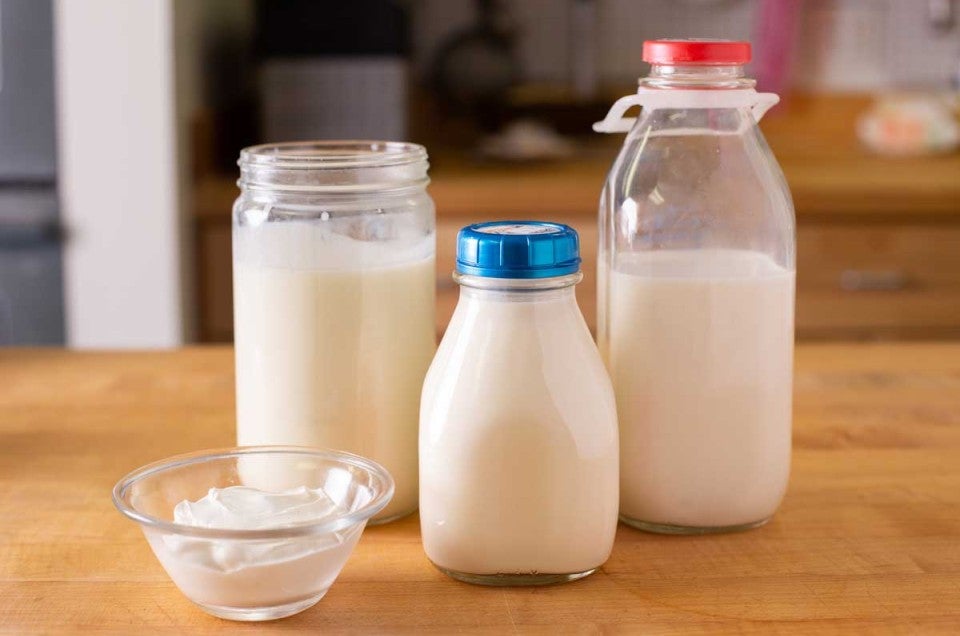


You cast your eyes over the list of ingredients in this new recipe you’re trying and lo and behold, there’s that darned buttermilk. You don’t have any buttermilk; in fact, you never buy buttermilk because there are very few baking recipes that use it and who wants an almost-full quart of buttermilk sitting in the back of the fridge making you feel guilty for contributing to food waste? So you sigh and turn to another recipe: one without buttermilk. But is there an easy substitute for buttermilk — something you already have in your kitchen?
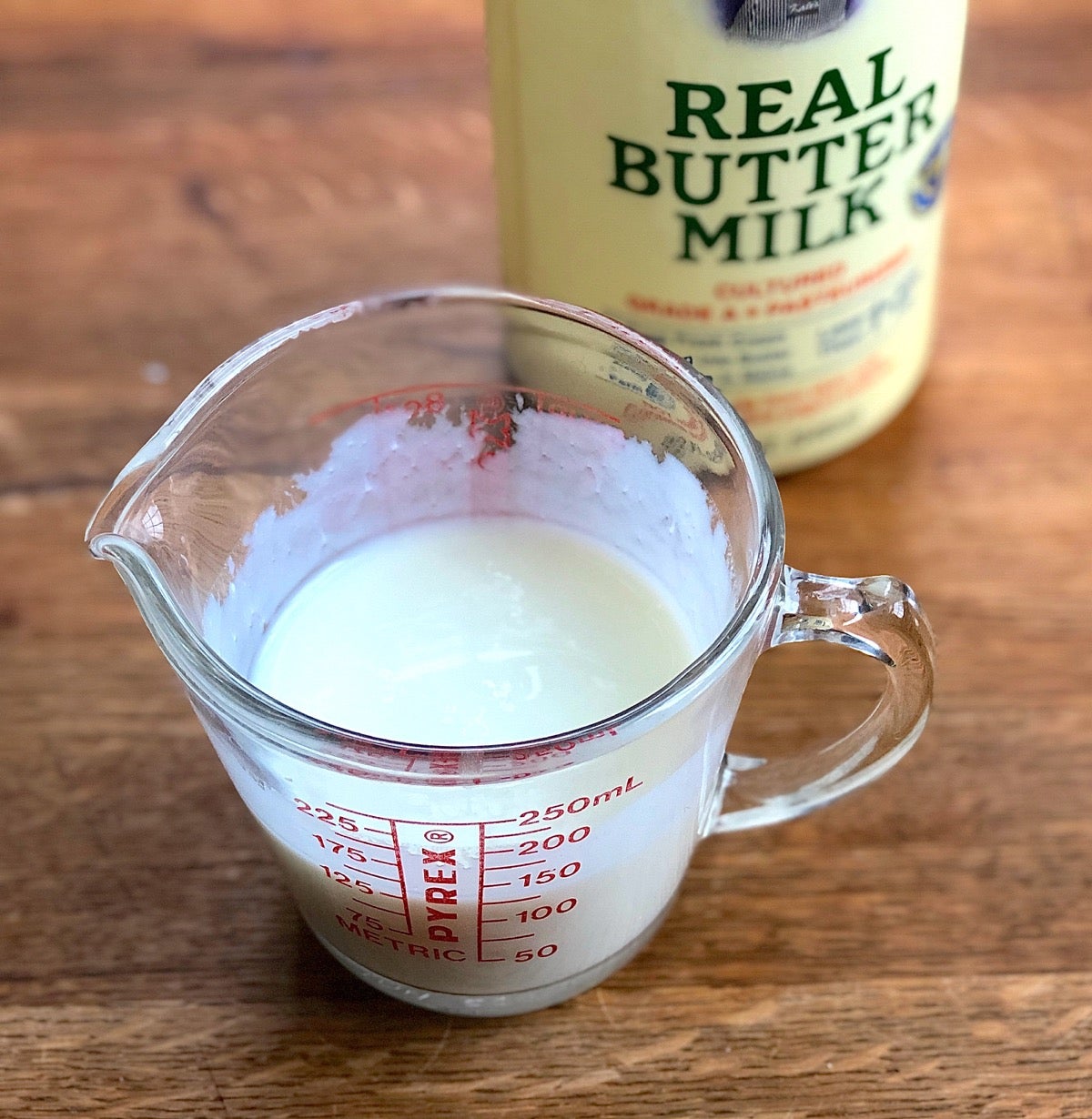
First, let’s clarify what buttermilk is, exactly. Traditional buttermilk is the thin, watery liquid left over after cream is churned into butter. It’s not commonly available in grocery stores — and hasn't been since the 1920s, when it was supplanted by our present-day cultured buttermilk, low-fat or skim milk that’s been inoculated with milk-friendly bacteria to thicken it and make it sour.
Many of the recipes you see calling for buttermilk are classics: pancakes, biscuits, cake. Buttermilk was a readily available ingredient (and one not to be wasted) back when butter-making was a common household task. Prized for its leavening ability when paired with baking soda, it was the basis of many a light and fluffy pancake and cloud-like biscuit.
Today, buttermilk isn’t a pantry staple for most of us, but rather something you purchase for one particular recipe. Which brings us back to where we started: If you don’t want to buy a quart of buttermilk, what can you substitute?
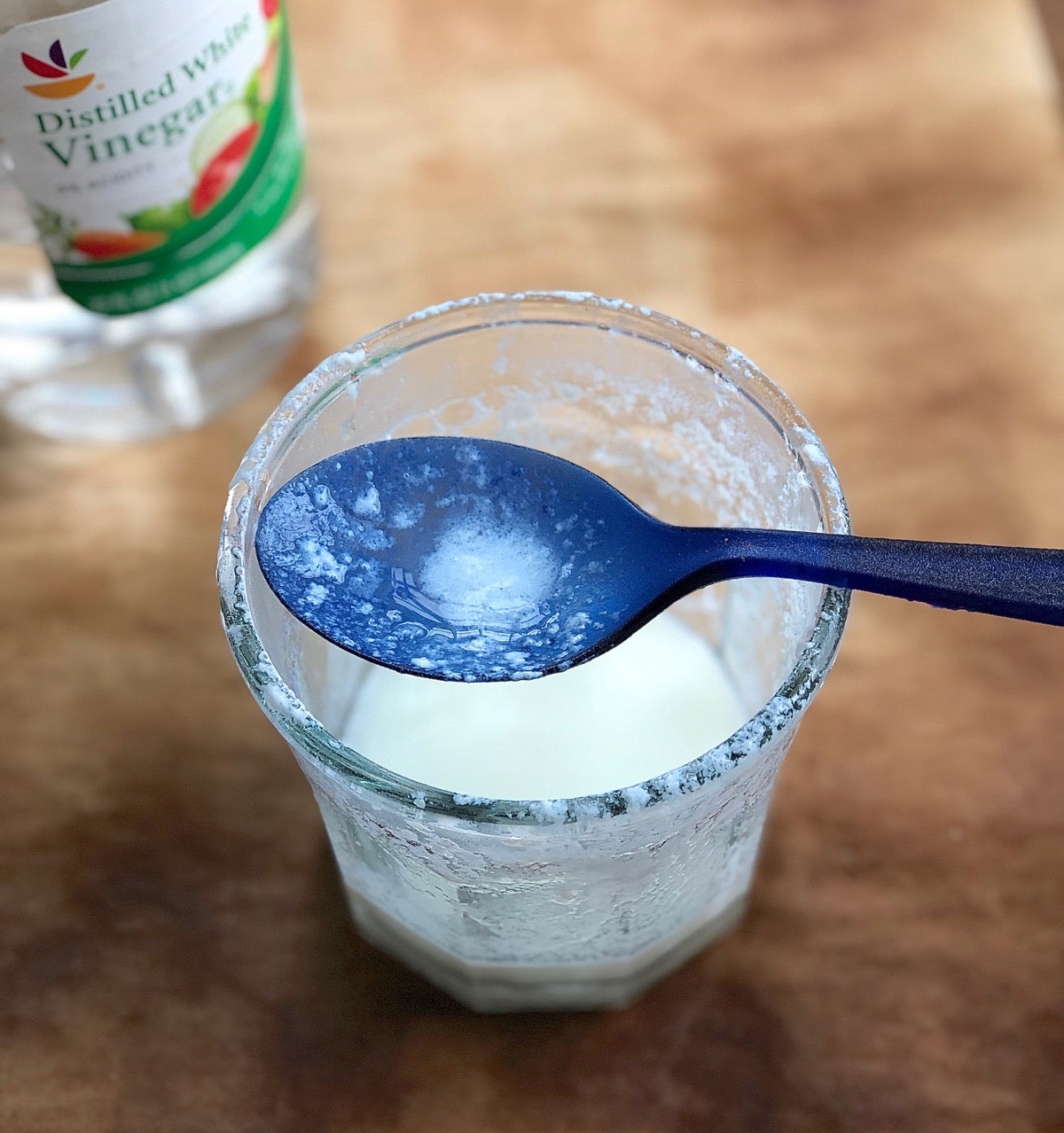
Here are the most common suggestions:
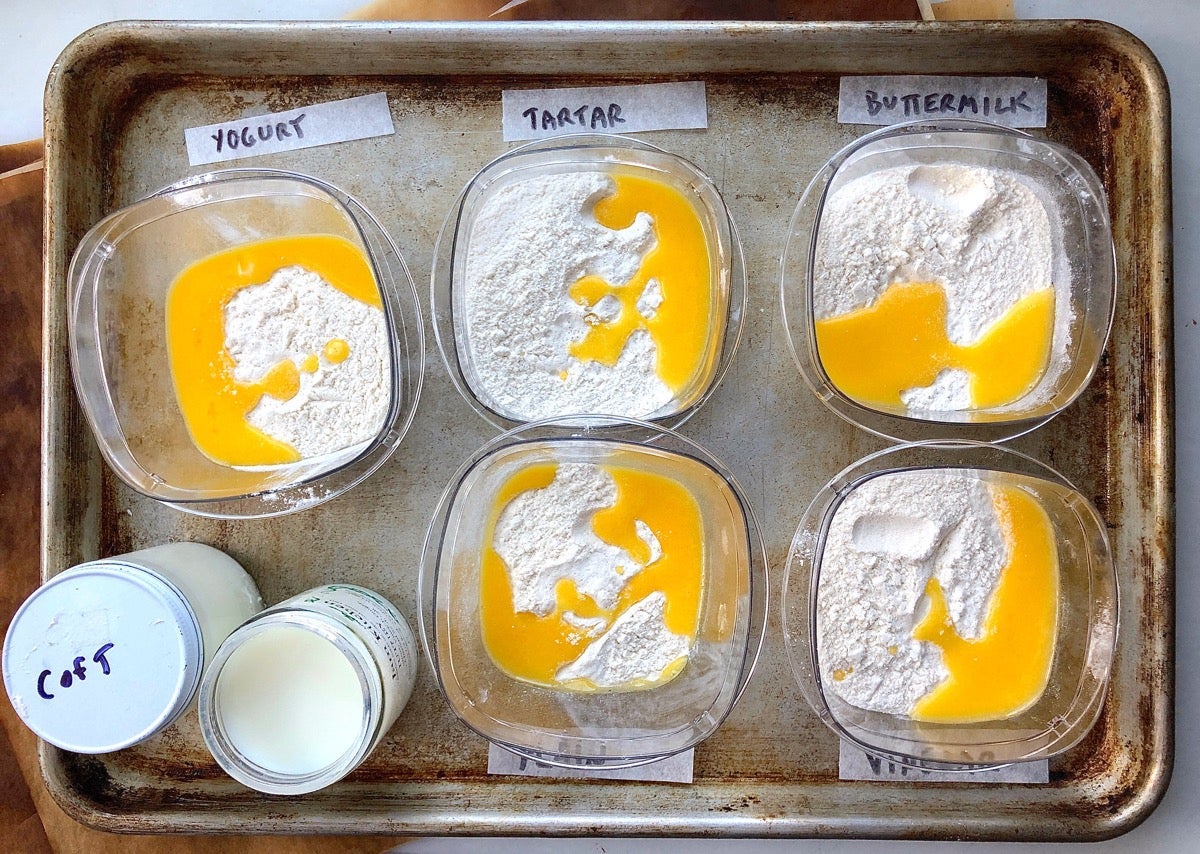
I decided to try several of these options in pancakes, biscuits, and a favorite buttermilk cake.
First off, I eliminate kefir (not a pantry staple) and sour cream (similar enough to Greek yogurt).
I also cross standard yogurt off the list, because how easy is it to find “un-Greek” yogurt these days? Scanning the shelves in my local supermarket I find one small section of plain yogurt — in quart-sized containers. Heck, I might as well buy a quart of buttermilk as plain yogurt.
But thick Greek yogurt — it’s ubiquitous. And many of you probably keep a container or two in your fridge most of the time for snacking, mixing with granola, or whipping up a smoothie.
From previous pancake experiments in our test kitchen, I know that Greek yogurt mixed 1:2 with 1% or skim milk (one part yogurt, two parts milk) yields the best results. It's also an easy ratio: mix one small container (5.3 ounces) of Greek yogurt with 1 1/3 cups of milk to yield 2 cups of buttermilk substitute.
So I test milk with vinegar, milk with cream of tartar, and thinned Greek yogurt against the control: buttermilk. While I'm at it, I take a step back and decide to test the easiest substitution of all: plain 1% milk in place of buttermilk.
Let's look at the results.
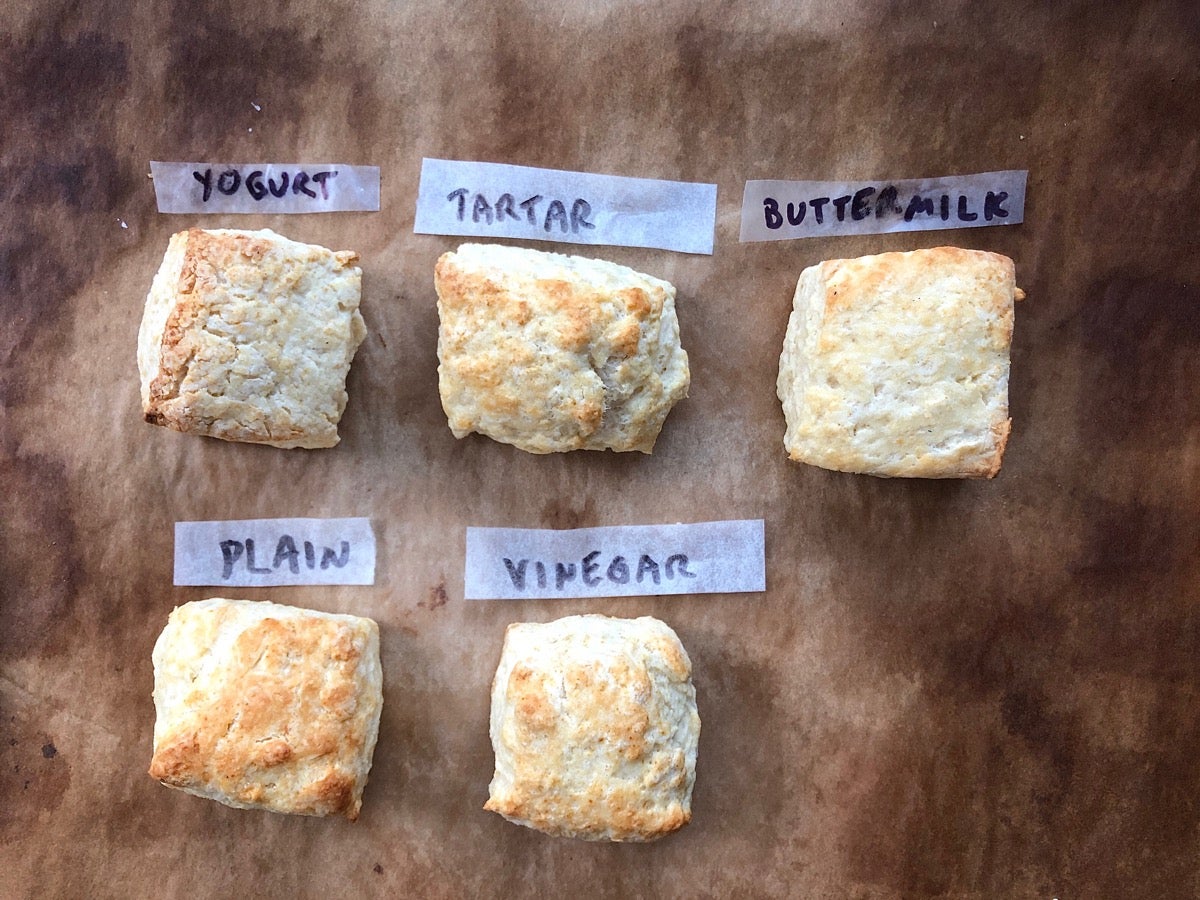
My first test, Baking Powder Biscuits, turns out to be a harbinger of things to come: all of the biscuits rise nicely and brown well. On sampling, their texture is the same — but the flavor of the buttermilk biscuits is best, a slight tang mixed with a hint of sweetness (is it the milk solids?). The yogurt biscuits taste almost as good. The vinegar and cream of tartar biscuits seem to lack depth of flavor, while the plain milk biscuit simply tastes flat.
Winner: Buttermilk
Runner-up: Greek yogurt mixed with milk
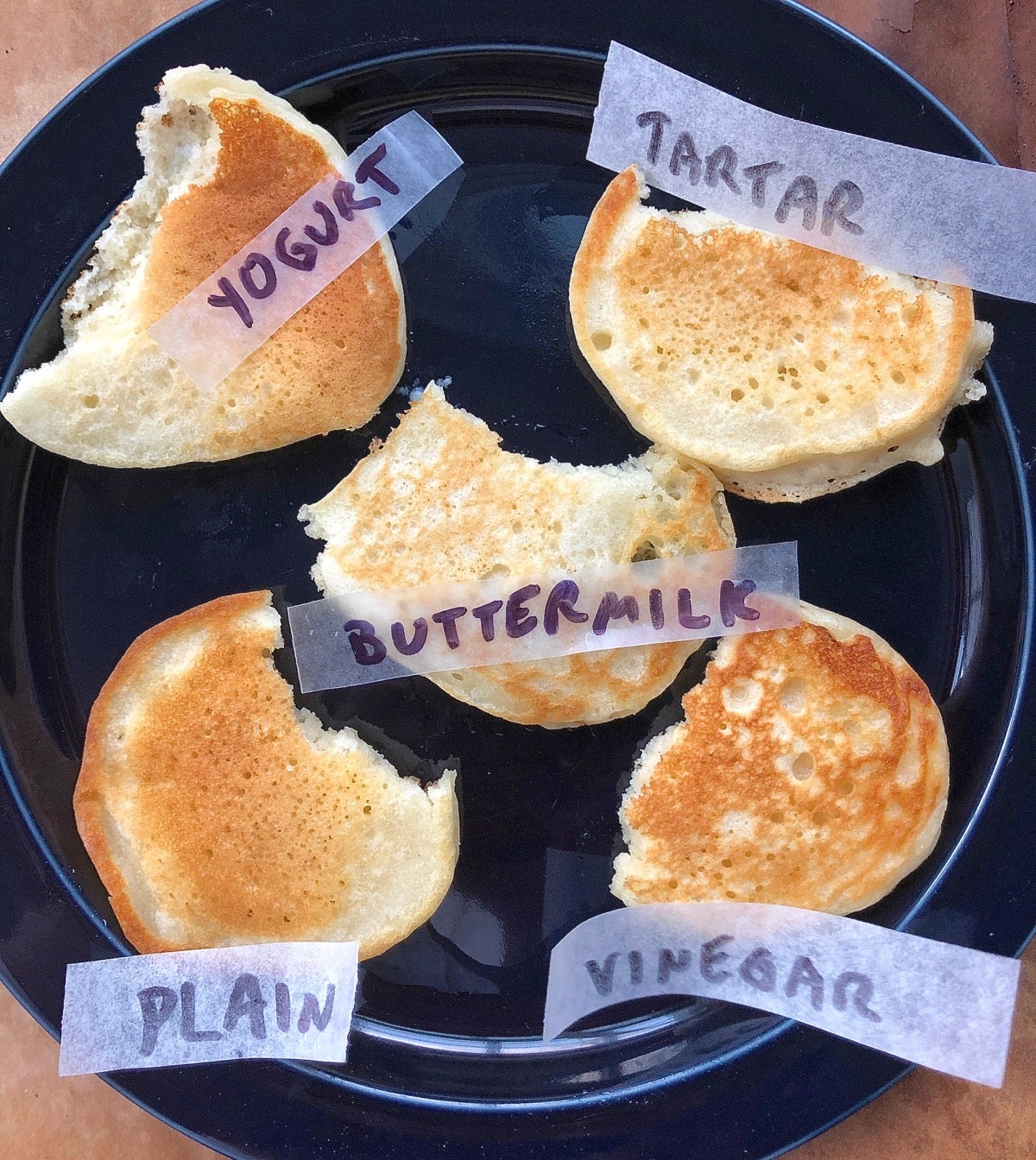
Substituting anything for buttermilk in Buttermilk Pancakes certainly belies the recipe's name. But aside from that, I notice results very similar to the biscuit experiment. The texture and browning of each of the pancake batches are similar — with the exception of the plain milk pancake, which rises less. But when it comes to flavor, the buttermilk and yogurt pancakes are neck and neck, with the others lagging slightly behind.
Winner: Buttermilk and Greek yogurt mixed with milk (tie)
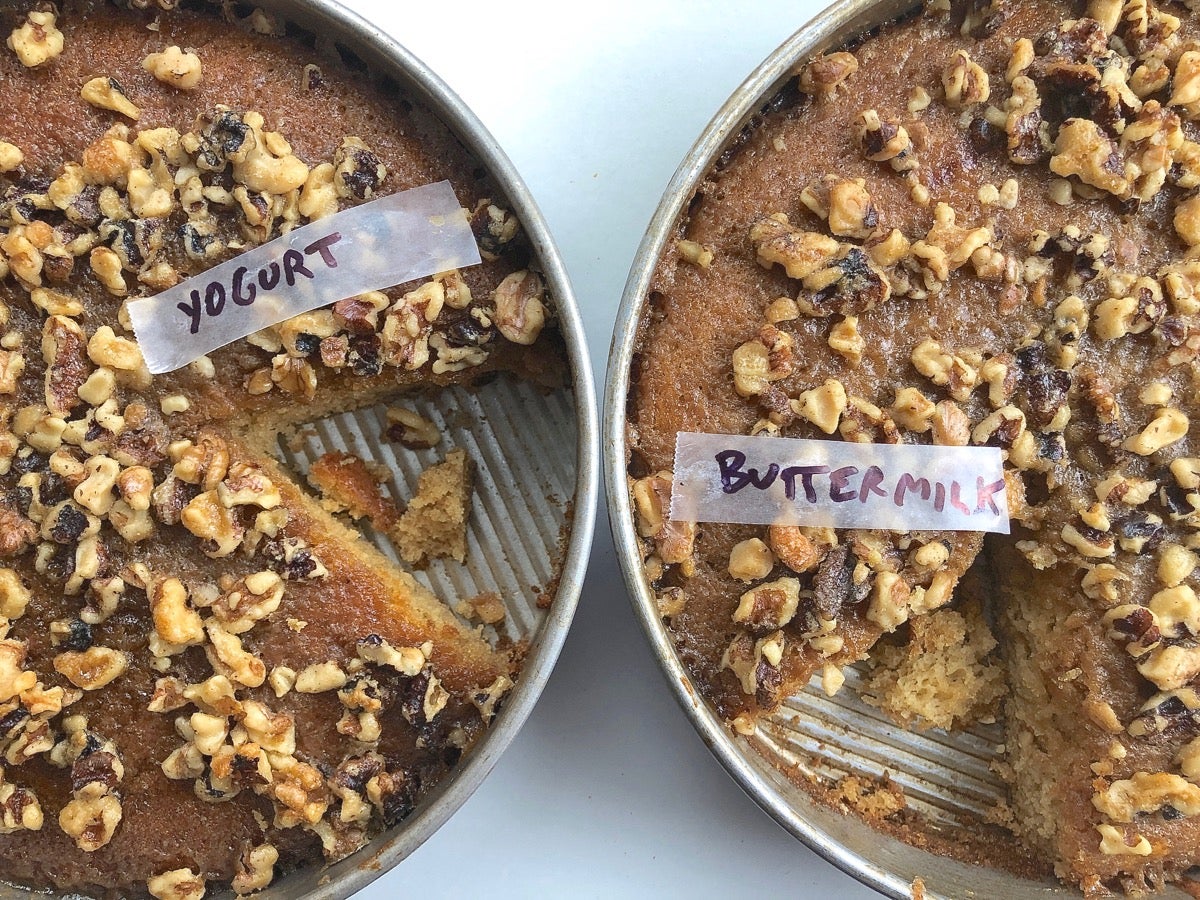
This Farmhouse Buttermilk Cake recipe is an old favorite of mine. The photo above doesn't do it justice; I was out of pecans so substituted walnuts, and then didn't chop them finely enough (rush, rush!). But this tender, golden cake, topped with its buttery, nut-laden syrup, is a true crowd-pleaser.
Compared to biscuits and pancakes, with their simple ingredients, this cake is complex: brown sugar, butter, vanilla, and nuts all contribute to the flavor profile. And because of that, the subtle, layered flavor of buttermilk in the cake is lost; you'll do just as well using any of the substitutes.
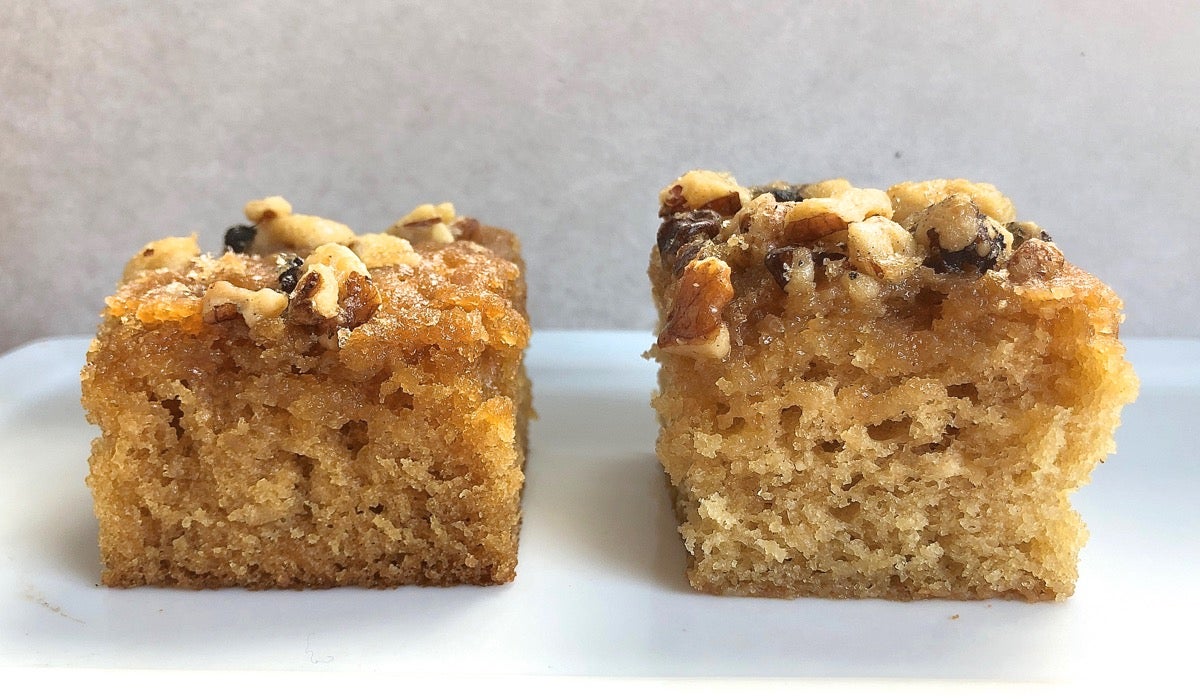
That is, with the exception of plain 1% milk. This old-fashioned cake is leavened with baking soda. Using plain milk, which lacks buttermilk's acidity, results in a darker-colored, denser cake.
Winner: All suggested options except plain milk
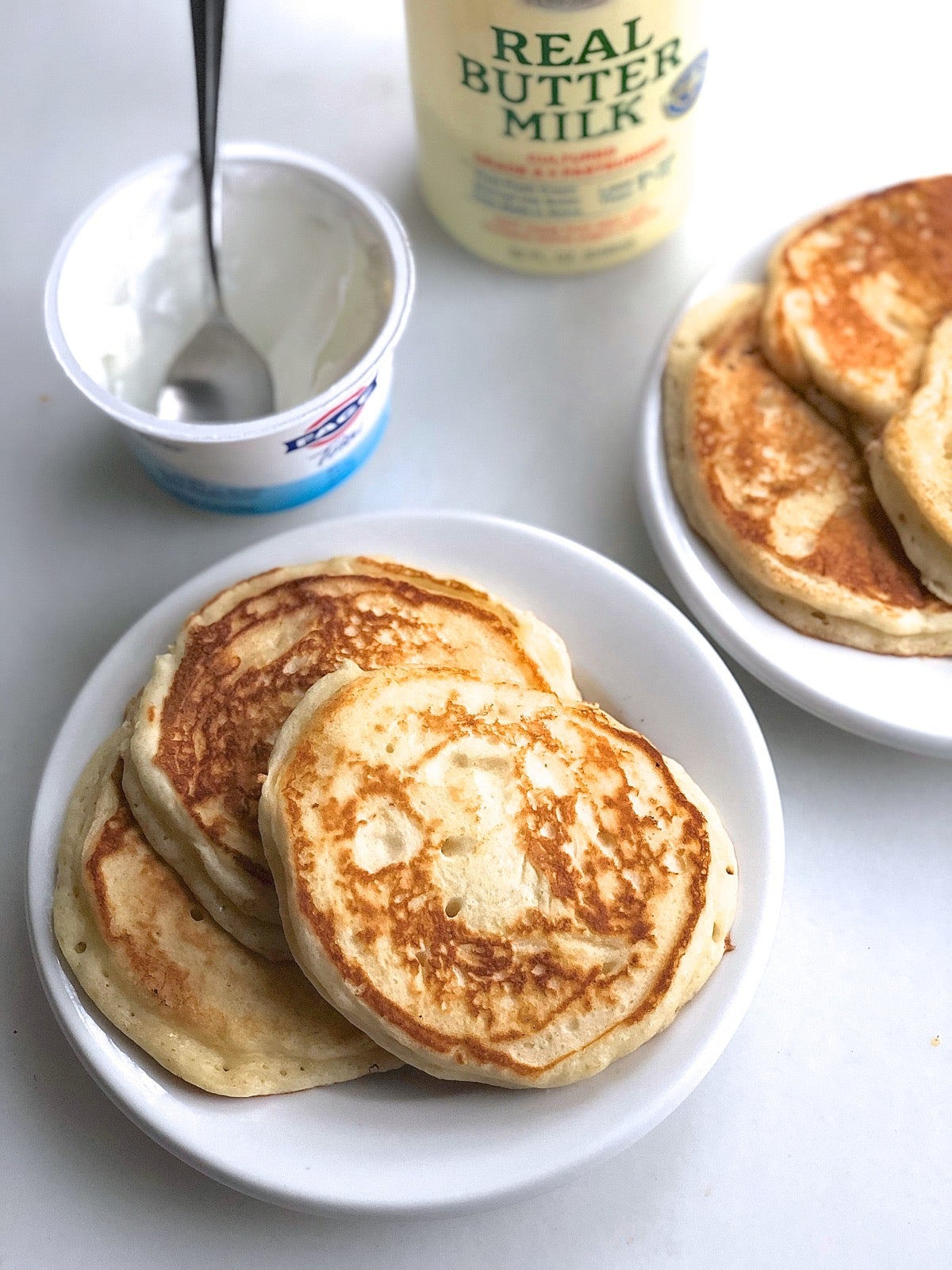
One last note about liquid buttermilk: If you buy a quart and don't use it up, you can always freeze it in 1/2-cup (or your preferred size) portions. It'll probably separate when you thaw it, but no worries; it's fine to use.
Now, what about dried buttermilk powder? I didn't include it in my testing results as, again, it's not an ingredient you'd likely stock in your pantry on a regular basis (unless you're an inveterate buttermilk baker). But it works as well as the "soured milk" options (milk + vinegar or cream of tartar). While lacking real buttermilk's rich flavor, it does react well with leaveners and help provide a good rise.
Speaking of biscuits, my fellow blogger Kye did a comprehensive test of different fat/liquid combinations in biscuits. (Spoiler alert: Her favorite biscuits include butter and buttermilk). For Kye's complete results, see Fats and liquids in biscuits: choosing your favorite texture.
Cover photo by Jennifer Bakos


January 26, 2021 at 3:01pm
If I'm substituting buttermilk for yogurt or vice versa, how do I do so if I'm using weight measures instead of volume? Especially if I might be using buttermilk powder and water.
February 4, 2021 at 9:45am
In reply to If I'm substituting… by Rhianna (not verified)
Hi Rhianna! In most recipes, you can just go ahead and use the same weight. If using powder and water, you'll want to follow the directions for weight on your powder regarding ratios, then add your powder to the dry ingredients and the recipe-specified weight for the water in your wet ingredients. Happy baking!
January 27, 2022 at 12:48pm
In reply to If I'm substituting… by Rhianna (not verified)
I can't tell you how many times I have wanted to bake something with buttermilk and had to throw out the rest of the container. I just made cornbread using Greek yogurt and non-fat milk. It came out great and the cornbread is very tasty. I use this type of yogurt for more things than just baking, and it has the advantage of being non-fat.
The tip about freezing buttermilk is very handy, however - I often wondered if one could do that and will give it a try.
January 24, 2021 at 8:43am
We have a local creamery that makes cultured butter and has traditional buttermilk remaining that they sell. So, I now have a quart of thin tangy buttermilk. Will it work in recipes calling for buttermilk since it’s so much thinner than buttermilk you typically find at the grocery?
I plan on trying it in biscuits and combining with whole milk.
January 29, 2021 at 2:46pm
In reply to We have a local creamery… by Becky (not verified)
It should work just fine, Becky!
February 28, 2024 at 2:45pm
In reply to It should work just fine,… by kmayerovitch
Thank you, Becky, for asking that question. I was wondering if I made my own butter could I use the liquid in place of cultured buttermilk. I have use the lemon juice or vinegar with milk substitute for years. Although now empty nesters, my husband only drinks whole milk. It has really affected the recipes I have been using (mostly chocolate and coffee cakes), but will it affect other recipes since it is not low fat or skim?
March 4, 2024 at 12:01pm
In reply to Thank you, Becky, for asking… by Margaret Franz (not verified)
Hi Margaret, if you're thinking of making your own butter, check out this blog post. Note that the liquid shed from this process isn't cultured, so won't substitute well for buttermilk, but you could use it in place of skim milk in baking. As far as using whole milk to make buttermilk (with added lemon juice or vinegar), I don't think the added fat will harm any recipes, although you might notice a light cake was a bit denser (but also richer and more tender).
October 10, 2021 at 11:53am
In reply to We have a local creamery… by Becky (not verified)
Real buttermilk freezes well. Also makes the best English muffins!
January 9, 2021 at 10:14am
If I use Kefir in a recipe do I have to adjust the sugar content because Kefir is more sour ?
January 10, 2021 at 4:33pm
In reply to If I use Kefir in a recipe… by Sabrina (not verified)
Hi, Sabrina! We've generally found that, given all the other ingredients in the recipe, it's not necessary to adjust for extra tartness. It's simply different, not unpleasant. Happy baking!
Pagination